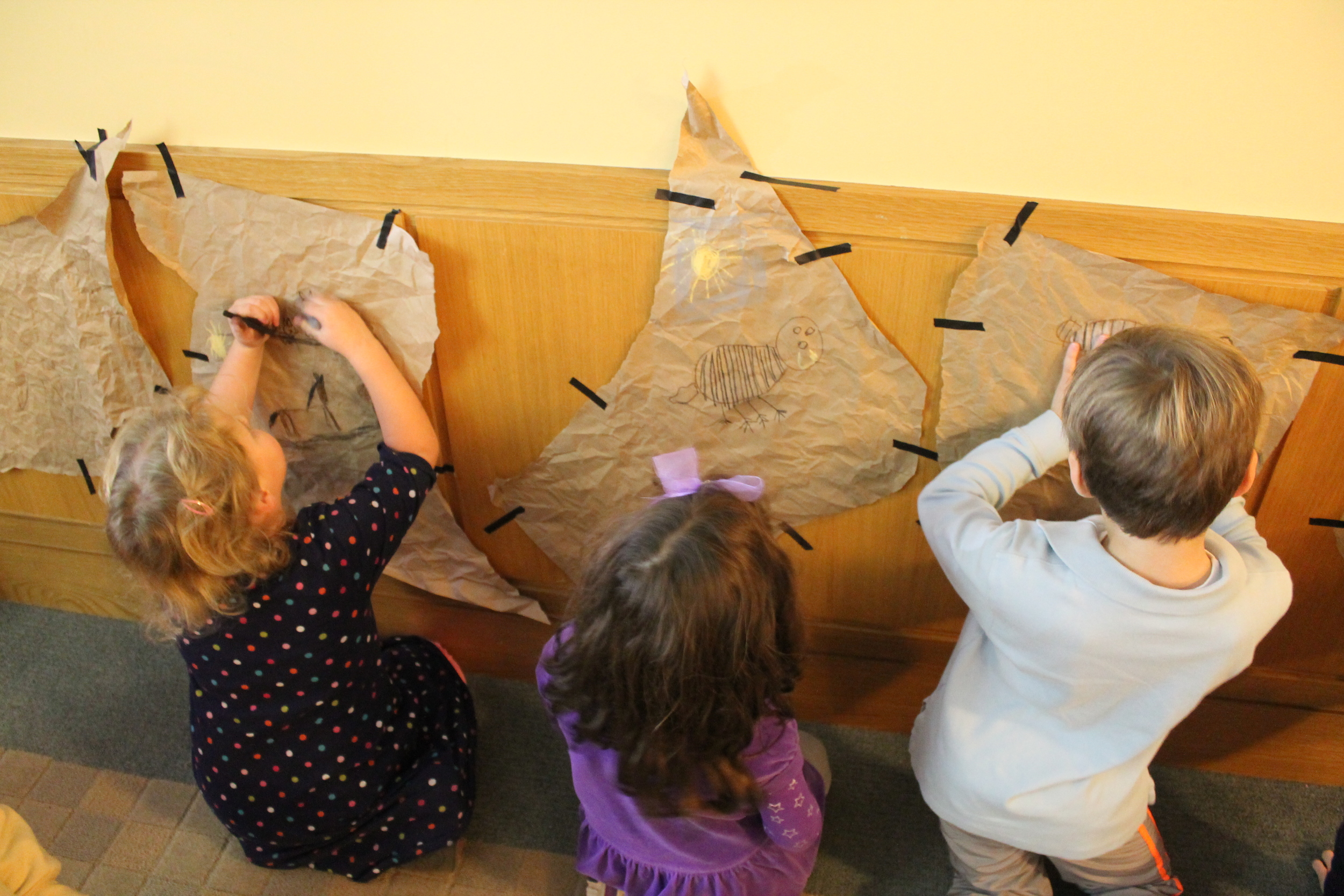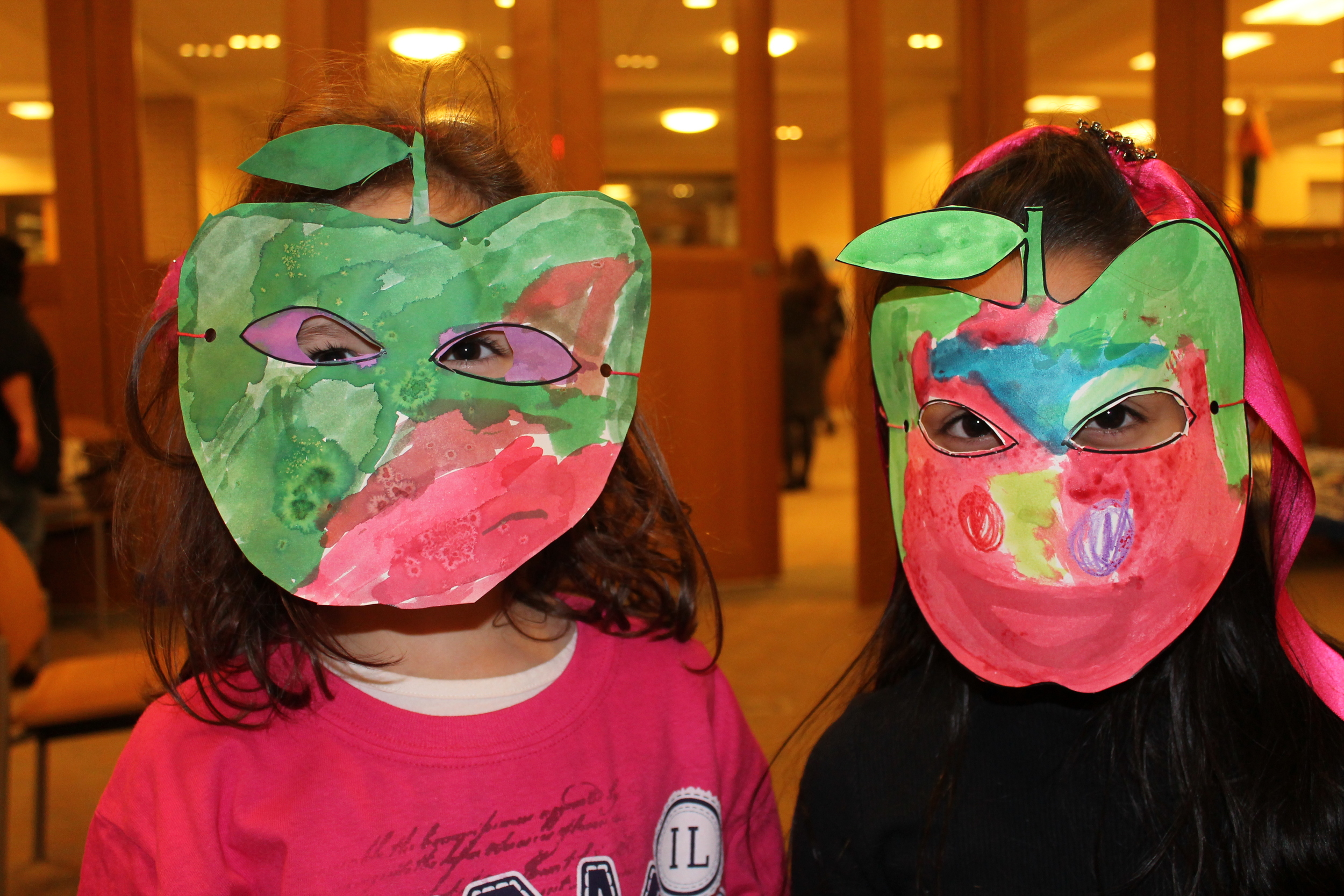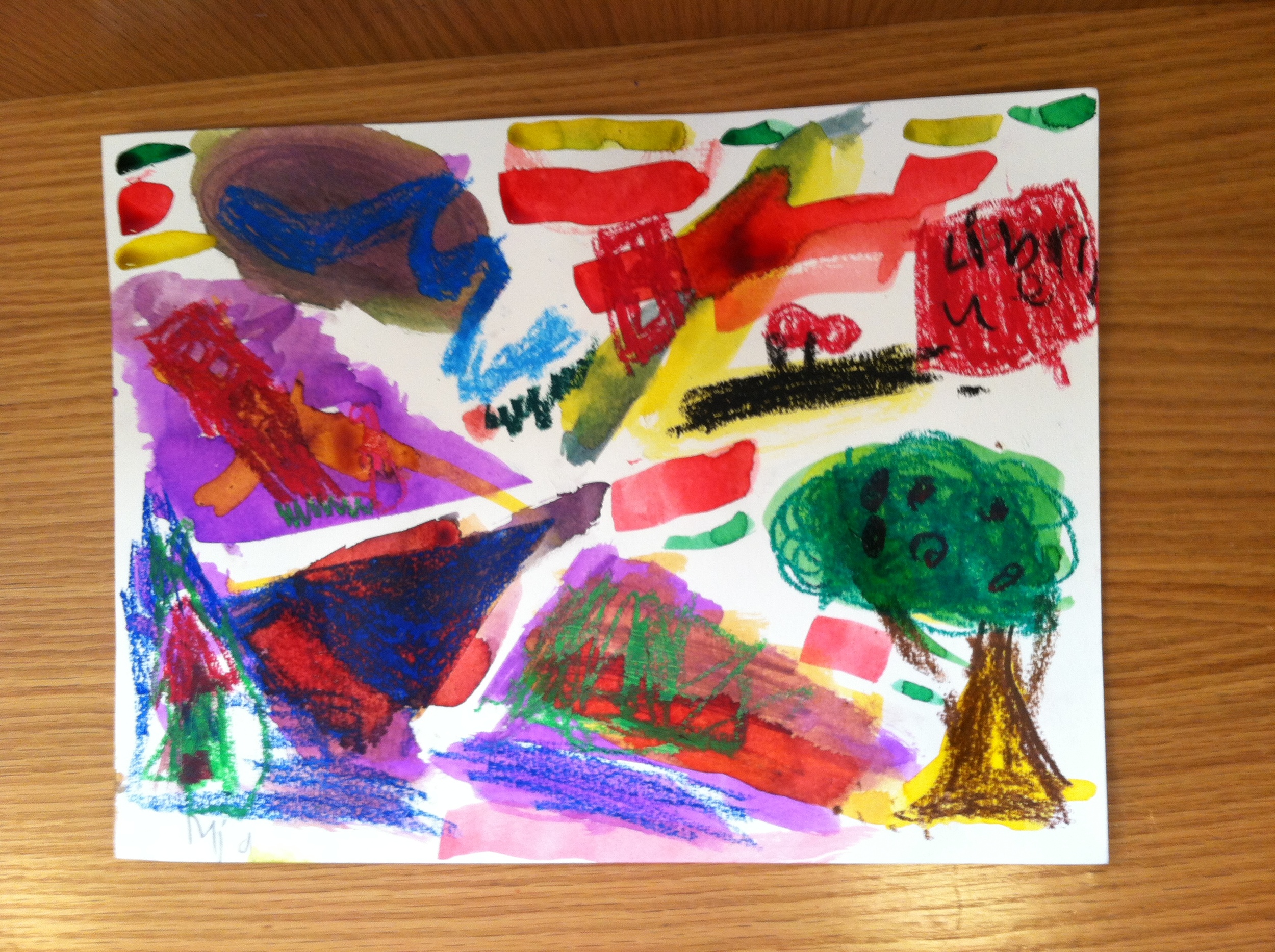Alas! My favorite class at the library has wrapped up. Bookworms, the drop-in storytime+art program for K-2nd graders is on break until August of next year. I’ve written about it before, but here are a couple more activities that we did.The format was always read a picture book, talk about an artist or medium/style, do an art program, and we would try to do a gallery walk – where we would hang the art and everyone would look at each others and people could talk about their work - as well (though kids got nervous sometimes that we would try to keep their work if we hung it up for a gallery walk)! I always printed out and hung up pictures of the artist or style so they could feel inspired.
 We started by reading The first drawing by Mordicai Gerstein
I kept the lights down low the whole time for this program to mimic being in a cave.
Opening framework: How long do you think people have been making art? We can’t really know! But some of the oldest art we’ve found is cave paintings, made on cave walls and ceilings, which date back to some 40,000 years ago in both Asia and Europe. The exact purpose of the Paleolithic cave paintings is not known.
Inspiring artists: slideshow of cave drawings - asking kids what do you see? What colors do you see? Why do you think artists used those colors?
Activity: I crinkled up brown butcher paper and hung it on the walls. Using pastels in earth tones, we created cave style drawings. I let the kids draw what they wanted to draw, but they made a lot of really interesting cave-like drawings.
We started by reading The first drawing by Mordicai Gerstein
I kept the lights down low the whole time for this program to mimic being in a cave.
Opening framework: How long do you think people have been making art? We can’t really know! But some of the oldest art we’ve found is cave paintings, made on cave walls and ceilings, which date back to some 40,000 years ago in both Asia and Europe. The exact purpose of the Paleolithic cave paintings is not known.
Inspiring artists: slideshow of cave drawings - asking kids what do you see? What colors do you see? Why do you think artists used those colors?
Activity: I crinkled up brown butcher paper and hung it on the walls. Using pastels in earth tones, we created cave style drawings. I let the kids draw what they wanted to draw, but they made a lot of really interesting cave-like drawings.
 We started by reading Magritte's Marvelous Hat by DB Johnson
Opening framework: Today we’re going to talk about surrealism! Surrealism is a style of modern art in which images are based on fantasy and the world of dreams. It flourished in Europe from the mid-1920's to well after the end of World War II (1939-45). Surrealist artists tried to liberate these buried thoughts and feelings and use them as subjects for their art. They loved dreams, silly things out of place, and pushing the boundaries in art.
Inspiring art: Magritte! I printed out some pictures of the paintings referenced in the book.
Activity: We created masks using watercolors and salt! The idea was that when you wear these masks, things might look a little different when you look out from behind it – maybe even a little surreal. I cut out apple masks and then had them paint with watercolors and experiment with salt resist.
We started by reading Magritte's Marvelous Hat by DB Johnson
Opening framework: Today we’re going to talk about surrealism! Surrealism is a style of modern art in which images are based on fantasy and the world of dreams. It flourished in Europe from the mid-1920's to well after the end of World War II (1939-45). Surrealist artists tried to liberate these buried thoughts and feelings and use them as subjects for their art. They loved dreams, silly things out of place, and pushing the boundaries in art.
Inspiring art: Magritte! I printed out some pictures of the paintings referenced in the book.
Activity: We created masks using watercolors and salt! The idea was that when you wear these masks, things might look a little different when you look out from behind it – maybe even a little surreal. I cut out apple masks and then had them paint with watercolors and experiment with salt resist.
 Young Frank, Architect by Frank Viva
Opening: We looked at city maps and talked about shapes we saw. Did anyone recognize the map of our town? What do we see in the maps? (lakes, streets, houses, trees, rivers, etc - write down on a big sheet)
Inspiring Artists: we looked at printed out pictures of the different towns from above and maps
Activity: With watercolor paper, we first did some taping with masking tape to make roads. Then we drew with oil pastels everything from trees to graveyards to houses. Then we painted over everything with liquid watercolors. Once the paintings were dry, we carefully peeled back the tape to reveal the white roads! When we did a gallery walk for this one everyone was very excited to talk about their towns.
Young Frank, Architect by Frank Viva
Opening: We looked at city maps and talked about shapes we saw. Did anyone recognize the map of our town? What do we see in the maps? (lakes, streets, houses, trees, rivers, etc - write down on a big sheet)
Inspiring Artists: we looked at printed out pictures of the different towns from above and maps
Activity: With watercolor paper, we first did some taping with masking tape to make roads. Then we drew with oil pastels everything from trees to graveyards to houses. Then we painted over everything with liquid watercolors. Once the paintings were dry, we carefully peeled back the tape to reveal the white roads! When we did a gallery walk for this one everyone was very excited to talk about their towns.
We started by reading The Iridescence of Birds by Patricia MacLachlan Opening framework - Today we’re going to paint with scissors, inspired by the artist Matisse! I showed a slideshow of his artwork – mostly the paper cutouts. I then also talked about shapes. I showed a picture of a pigeon (mentioned in the book) and we talked about what shapes we saw in the bird, and what kinds of shapes there are in the world. Geometric shapes — shapes that are commonly found in geometry, such as squares, triangles and rectangles Organic shapes — shapes that are commonly found in nature, usually with curved, irregular lines Positive shape — the shape itself Negative shape — the area around a shape or in between shapes, where you can see the background behind a shape Repeating shapes — the same shape, repeated multiple times, often in a grouping or making a path across the paper Stylized — an image which is simplified to the point of being abstract, but still carries a resemblance of it’s original form Activity: Everyone got scissors, iridescent paper, and construction paper – and even some fabric scraps (Matisse loved fabric). I printed out pictures of birds and arranged them for maximum enjoyment. Then they went wild! Only a couple people made birds – there were also some monsters, rugs (?!), and portraits.
We started by reading Shadow by Suzy Lee Opening framework: Shadows can be used to create art as well! Have you ever looked around and seen an interesting shadow? This was a wordless picture book, so we talked a lot during the reading of the story so that they could tell the story themselves. Inspiring artists: Kumi Yamashita, Indonesian Shadow Puppets Activity: We made foil puppets and shapes. I set up the room so there was a dark corner with bright lights to create stark shadows, where I helped them trace the shadow. Using oil pastels, they turned those shadow drawings into something cool!